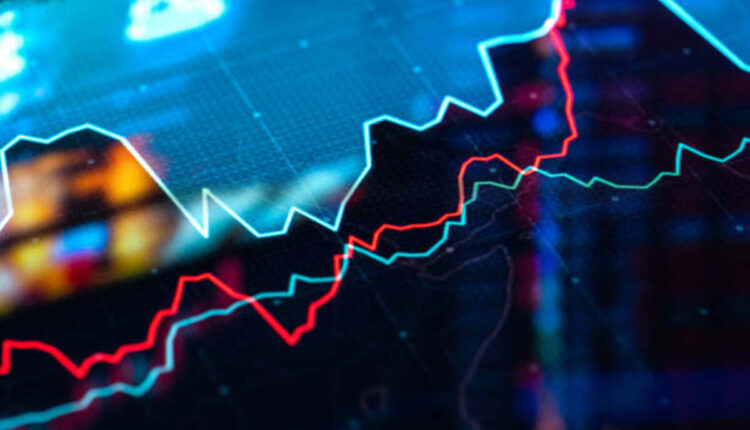AI for forex trading offers an innovative approach to foreign exchange trading. By identifying patterns in financial data to predict market movements, this new technology becomes invaluable for traders and analysts. This is the best guide to finding a forex robot.
AI’s powerful algorithms can help mitigate financial losses due to sudden market shifts. However, it’s essential not to over-rely on AI alone and still employ human judgment when trading.
Accurate Predictions
Foreign Exchange Trading can be an unpredictable market that’s difficult to predict. AI-powered forex trading tools use machine learning algorithms to analyze data and recognize patterns, providing accurate predictions that help traders make informed trading decisions that match with current market trends and seize opportunities as soon as they arise.
AI-powered forex prediction models consider various metrics and indicators, such as traditional economic data, historical market patterns, and social media sentiment analysis, to more accurately forecast currency exchange rates and avoid costly mistakes. They can also assist traders and financial analysts in navigating the market more confidently and with strategic insight.
The accuracy of AI forex forecasts depends heavily on the quality of the data used. Therefore, traders must remain mindful of any bias present in their training data, refining AI models as necessary to adapt to ever-evolving market conditions and new economic information. Furthermore, traders should avoid over-relying on AI, as this may lead to misguided decision-making or ineffective risk management practices.
Sentiment Analysis
Sentiment analysis is an integral component of CFD trading. Gaining insight into market dynamics reveals potential trends and patterns, helping traders make more informed decisions. Artificial Intelligence-powered sentiment analysis using Natural Language Processing (NLP) has made significant strides forward in this area.
NLP algorithms use text analysis techniques to interpret its meaning and nuances, offering exceptional precision compared with rule-based approaches for sentiment analysis. This makes NLP the superior approach.
AI and NLP combine to give traders insight into possible market shifts before they manifest in charts. This enables them to craft proactive strategies and turn CFD trading into a robust strategic decision-making and risk-management tool.
Pattern Recognition
Traders can leverage pattern recognition—an AI application that recognizes recurring patterns in the market and forecasts future trends—to optimize their trading strategies and increase their profit potential.
Improved Market Analysis
Artificial intelligence algorithms are capable of quickly processing large volumes of financial data, quickly uncovering patterns and correlations that remain unseen to human analysts, and unusual market activity that may signal shifts before they manifest on charts. This enables traders to make more informed trading decisions while decreasing risks from unexpected market volatility.
AI-driven predictions provide traders with a tool to manage risks and protect themselves against sudden market fluctuations while simultaneously cutting transaction costs by eliminating unnecessary trades. It’s important to remember, though, that AI should never replace sound judgment and critical thinking skills; furthermore, it must meet data privacy regulations to protect traders against investment scams that pose such a significant threat in the forex trading industry. Investors should become familiar with common scam tactics and warning signs so as not to become victims.
Customized Trading Recommendations
AI in forex trading can be invaluable to experienced traders looking to automate their strategies and novices looking to break into trading. AI can increase profits by analyzing market data, anticipating trends, and providing trade ideas.
Technology can also assist you with creating and executing trading programs based on pre-set rules that suit your risk tolerance, investment goals, and trading style. Furthermore, this software can analyze current and historical market data to detect patterns that humans might overlook.
AI can assist with understanding market sentiment through natural language processing and sentiment analysis, allowing you to track emotions driving markets and predict shifts before they show up on charts. This gives AI traders an edge over human traders, who tend to make decisions based on guesses, biases, and emotions rather than hard data. Successful traders combine intuitive decision-making with data-driven decision-making to test strategies in different market conditions before backtesting strategies against historical data for optimal performance.
High-Frequency Trading
Forecasting fluctuations in global currency exchange markets presents an exciting forecasting challenge. Exchange fluctuations are affected by numerous economic factors, such as GDP, monetary policy, and international trade – which makes identifying broad trends with their impact on currency values all the more crucial for traders and financial institutions alike. AI’s use of vast arrays of data points allows AI to recognize these patterns quickly, allowing traders and institutions to anticipate possible volatility more accurately.
AI algorithms rely heavily on accurate, precise, and timely data to make informed predictions and trading decisions in forex trading—especially high-frequency trading, where even minor price discrepancies can yield huge profits.
However, it should be remembered that AI cannot replace human judgment when trading forex. Even advanced AI systems may become disrupted by unexpected market movements. Therefore, to ensure objective decisions with maximum professionalism, a robust strategy that incorporates both automation and human cognition should be employed simultaneously in order to achieve optimal trading decisions.


